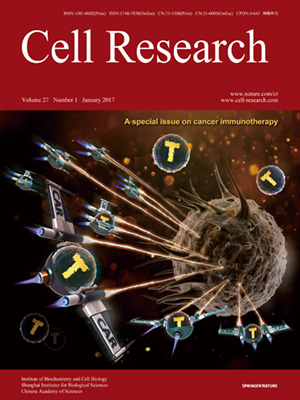
Volume 27, No 1, Jan 2017
ISSN: 1001-0602
EISSN: 1748-7838 2018
impact factor 17.848*
(Clarivate Analytics, 2019)
Volume 27 Issue 1, January 2017: 1-2
EDITORIAL
A special issue on cancer immunotherapy
Rong-Fu Wang1,2,3
1Center for Inflammation and Epigenetics, Houston Methodist Research Institute, Houston, TX 77030, USA
2Department of Microbiology and Immunology, Weill Cornell Medical College, Cornell University, New York, NY 10065, USA
3Institute of Biosciences and Technology, College of Medicine, Texas A & M University, Houston, Texas 77030, USA
Correspondence: (rwang3@houstonmethodist.org)
A century ago, Paul Ehrlich postulated that cancer would be quite common in long-lived organisms if not for the protective effects of immunity. Harnessing the immune system to treat cancer can be traced back to William Coley, a surgeon at Cornell University, who treated cancer patients with live bacteria in 1896. In 1980s, Steven Rosenberg and his colleagues developed adoptive cell therapy (ACT) using tumor-infiltrating lymphocytes (TILs) for the treatment of melanoma cancer patients1, providing the first direct evidence that the immune system can be manipulated to achieve therapeutic efficacy in cancer treatment. Despite significant progresses made before 2010, many clinical studies were met only with sporadic success, leading to the disbelief in most people that cancer immunotherapy can effectively treat cancer.
10.1038/cr.2017.1
FULL TEXT | PDF
Browse 3038


